Automatisch generierte Übersetzung
Original anzeigen
Übersetzung anzeigen
Costumi by Giò Ponti for Bardelli Ceramica, Italy.
14 New old stock 1980's ceramic tiles designed by Giò Ponti.
A beautiful complete impossible to come by set in great condition.
Il Pulcinella di Strawinsky's "Pulcinella" and Gluck's "Orfeo".
These were Gio Ponti's two principal encounters with the theatre, taking place within the same decade and cantered on La Scala: I have worked at La Scala Scenes and costumes: but Ponti would have liked to be the director and not just dress the characters and dress the stage. He had felt this way ever since he had fallen in love with the Russian ballets of Diaghilev at first sight, and then with Apia's theatre. Gio Ponti's architecture was itself almost a theatre, a stage for the moving figures that appeared and disappeared from its staircases, balustrades, balconies, and perspectives. And the clothes that he loved to designwere already costumes. Like the ones for his theatre: costumes that looked as if they were cut out of paper, that one slipped into to make them dance: total costumes, in which the wearer disappeared; the hands vanished always gloved, and so did the hair always under a hat. Simplified costumes, made to be viewed from afar, with nothing material, and still less historical, about them. So were his scenes, which had to look like mere enlargements of rapid sketches. That is to say, they were intended to allude to scenes, not to be them. To simulate the theatre. This is why Ponti wrote on his sketches, do it badly. What he loved about theatrical costume makers was their extraordinary capacity for improvisation. What he feared, and detested, were attempts at theatrical realism. It could be said that his kind of performance was the ballet, and his kind of character was Harlequin, an acrobat of grace and detachment even if -see his theatre script II Coro- he sometimes lapsed into solemnity.
GIO PONTI was born in Milan on November 18th, 1891. He graduated in architecture to the Polytechnic of his town in 1921. He carried out his activity for six decades - from 1920 up to 1970 - not only in architecture, but also in the fields of painting, design, teaching, and journalism. Planning and promoting quality, by means of exhibitions and magazines, were the univocal objectives for him, and for his meaning for future. Of the years twenty are his first architecture “neoclassic” works, the house of Randaccio street in Milan, the Bouilhel house in Garches, Paris. from 1923 up to 1930 he was the artistic manager of Richard Ginori, and he remade the entire production of the company. For Gio Ponti the ceramics was always his favorite explication, from the creation of the “animated bottles” for Ceramica d’Imola, to the various ceramic series often created in connection with architecture, such as the ceramic tiles “diamanti” of the Ceramica Joo, and also for the façades of the Pirelli skyscraper, or the Shui-Hing Stores in Hong Kong, or the Bijenkorf Stores in Eindoven Holland, or the INA palace in S. Paolo street Milan. In 1928 he established Domus magazine, that will be managed for fourty years. In 1941 he established the magazine Stile. Gio Ponti architecture, well known all over the world can be discussed in an emblematic way; if the Pirelli tower is the architectural symbol of 1950, the cathedral of Taranto and the museum of Denver in Colorado are the new symbols of 1970. In the design field, the Pavoni coffee-machine pointed out the creative reneval of design in 1950, such as also the super-light chair of Cassina. The “colored floors” for “Salzburger Nachrichten” in Salisburgo are the Gio Ponti contribution to the of the years ’70. Gio Ponti died in Milan on September 16th, 1979, he was 88 years old.
Costumi von Giò Ponti für Bardelli Ceramica, Italien.
14 New old stock 1980's Keramikfliesen von Giò Ponti entworfen.
Eine schöne komplette unmöglich zu kommen durch Satz in gutem Zustand.
Il Pulcinella di Strawinsky's "Pulcinella" und Gluck's "Orfeo".
Dies waren die beiden wichtigsten Begegnungen von Gio Ponti mit dem Theater, die im selben Jahrzehnt stattfanden und an der Scala aufgeführt wurden: Ich habe an der Scala gearbeitet, Szenen und Kostüme: aber Ponti wäre gerne der Regisseur gewesen und hätte nicht nur die Figuren eingekleidet und die Bühne dekoriert. So hatte er sich gefühlt, seit er sich auf den ersten Blick in die russischen Ballette von Diaghilew und dann in das Theater von Apia verliebt hatte. Die Architektur von Gio Ponti war fast selbst ein Theater, eine Bühne für die sich bewegenden Figuren, die auf den Treppen, Balustraden, Balkonen und Perspektiven erschienen und verschwanden. Und die Kleider, die er zu entwerfen liebte, waren bereits Kostüme. Wie die für sein Theater: Kostüme, die aussahen, als wären sie aus Papier ausgeschnitten, in die man schlüpfte, um sie tanzen zu lassen: totale Kostüme, in denen der Träger verschwand; die Hände verschwanden immer mit Handschuhen, und die Haare immer unter einem Hut. Vereinfachte Kostüme, die aus der Ferne betrachtet werden können, die nichts Materielles und noch weniger Historisches an sich haben. Das gilt auch für seine Szenen, die wie Vergrößerungen von schnellen Skizzen aussehen müssen. Das heißt, sie sollten auf die Szenen anspielen, nicht sie sein. Sie sollten das Theater simulieren. Deshalb schrieb Ponti auf seine Skizzen: Mach es schlecht. Was er an den Kostümbildnern des Theaters liebte, war ihre außergewöhnliche Fähigkeit zur Improvisation. Was er fürchtete und verabscheute, waren Versuche eines theatralischen Realismus. Man könnte sagen, dass seine Art von Aufführung das Ballett war, und seine Art von Figur war Harlekin, ein Akrobat von Anmut und Unbekümmertheit, auch wenn er - siehe seine Theaterschrift II Coro - manchmal ins Feierliche abdriftete.
GIO PONTI wurde am 18. November 1891 in Mailand geboren. Er machte 1921 seinen Abschluss in Architektur am Polytechnikum seiner Stadt. Sechs Jahrzehnte lang - von 1920 bis 1970 - war er nicht nur in der Architektur, sondern auch in den Bereichen Malerei, Design, Lehre und Journalismus tätig. Die Planung und die Förderung der Qualität durch Ausstellungen und Zeitschriften waren für ihn die eindeutigen Ziele und seine Bedeutung für die Zukunft. Aus den zwanziger Jahren sind seine ersten architektonischen "neoklassischen" Werke, das Haus in der Randaccio Straße in Mailand, das Bouilhel Haus in Garches, Paris. Von 1923 bis 1930 war er der künstlerische Leiter von Richard Ginori, und er überarbeitete die gesamte Produktion des Unternehmens. Für Gio Ponti war die Keramik immer seine Lieblingsbeschäftigung, von der Kreation der "belebten Flaschen" für Ceramica d'Imola bis zu den verschiedenen Keramikserien, die oft in Verbindung mit der Architektur geschaffen wurden, wie die Keramikfliesen "diamanti" der Ceramica Joo, und auch für die Fassaden des Pirelli-Wolkenkratzers oder die Shui-Hing Stores in Hongkong, oder die Bijenkorf Stores in Eindoven Holland, oder der INA-Palast in der S. Paolo Straße in Mailand. Im Jahr 1928 gründete er die Zeitschrift Domus, die er vierzig Jahre lang leitete. Im Jahr 1941 gründete er die Zeitschrift Stile. Die Architektur von Gio Ponti, die in der ganzen Welt bekannt ist, kann auf emblematische Weise diskutiert werden; wenn der Pirelli-Turm das architektonische Symbol von 1950 ist, sind die Kathedrale von Taranto und das Museum von Denver in Colorado die neuen Symbole von 1970. Im Bereich des Designs wies die Kaffeemaschine Pavoni auf die kreative Erneuerung des Designs im Jahr 1950 hin, ebenso wie der superleichte Stuhl von Cassina. Die "farbigen Fußböden" für die "Salzburger Nachrichten" in Salisburgo sind der Beitrag Gio Pontis zu den 70er Jahren. Gio Ponti starb am 16. September 1979 in Mailand, er wurde 88 Jahre alt.
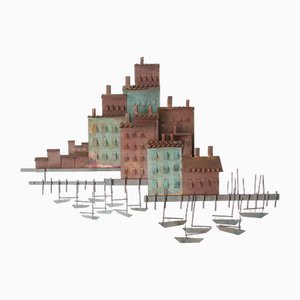
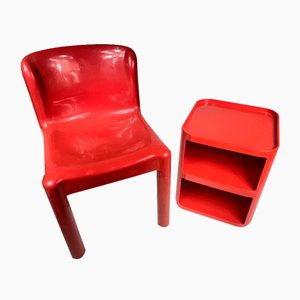

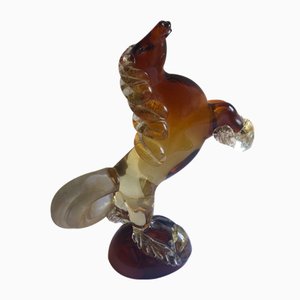

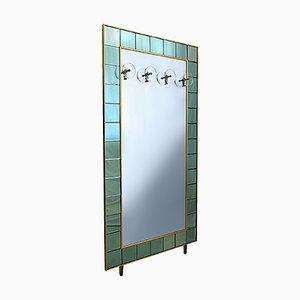
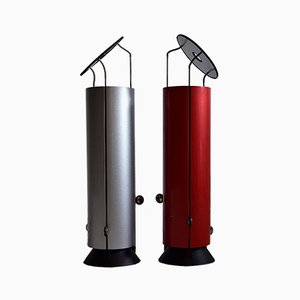

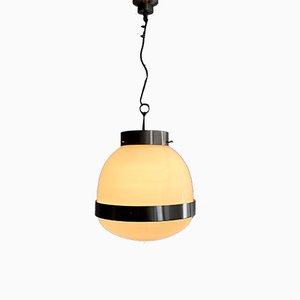

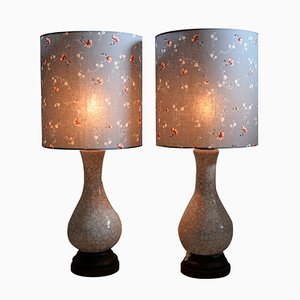


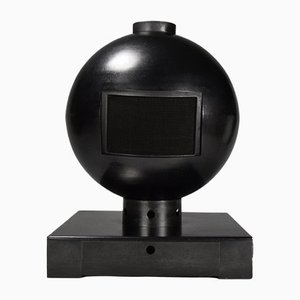
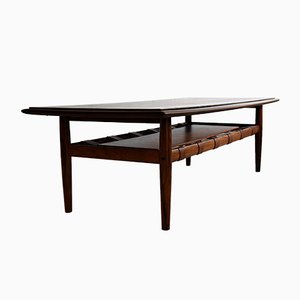
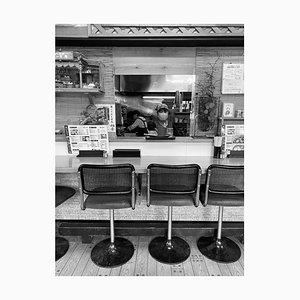
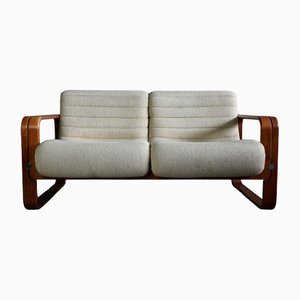
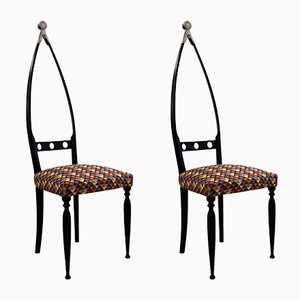
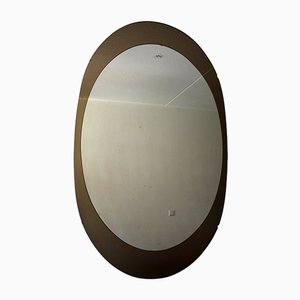
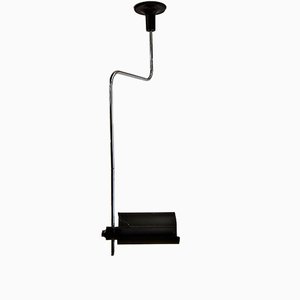
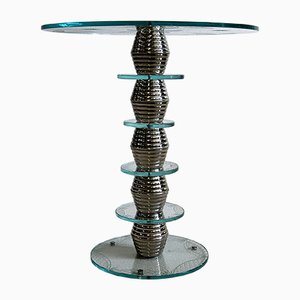

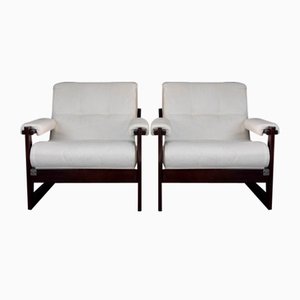
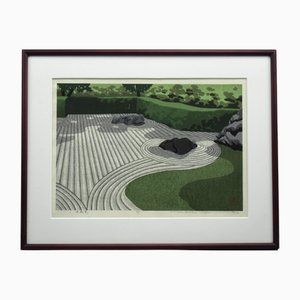
Schreiben Sie uns
Ein Angebot machen
Uns ist aufgefallen, dass Sie neu bei Pamono sind!
Bitte akzeptieren Sie die Allgemeinen Geschäftsbedingungen und die Datenschutzerklärung
Schreiben Sie uns
Ein Angebot machen
Fast geschafft!
Um die Kommunikation einsehen und verfolgen zu können, schließen Sie bitte Ihre Registrierung ab. Um mit Ihrem Angebot auf der Plattform fortzufahren, schließen Sie bitte die Registrierung ab.Erfolgreich
Vielen Dank für Ihre Anfrage! Unser Team meldet sich in Kürze bei Ihnen zurück.
Wenn Sie Architekt*in oder Inneneinrichter*in sind, bewerben Sie sich hier um dem Trage Program beizutreten.